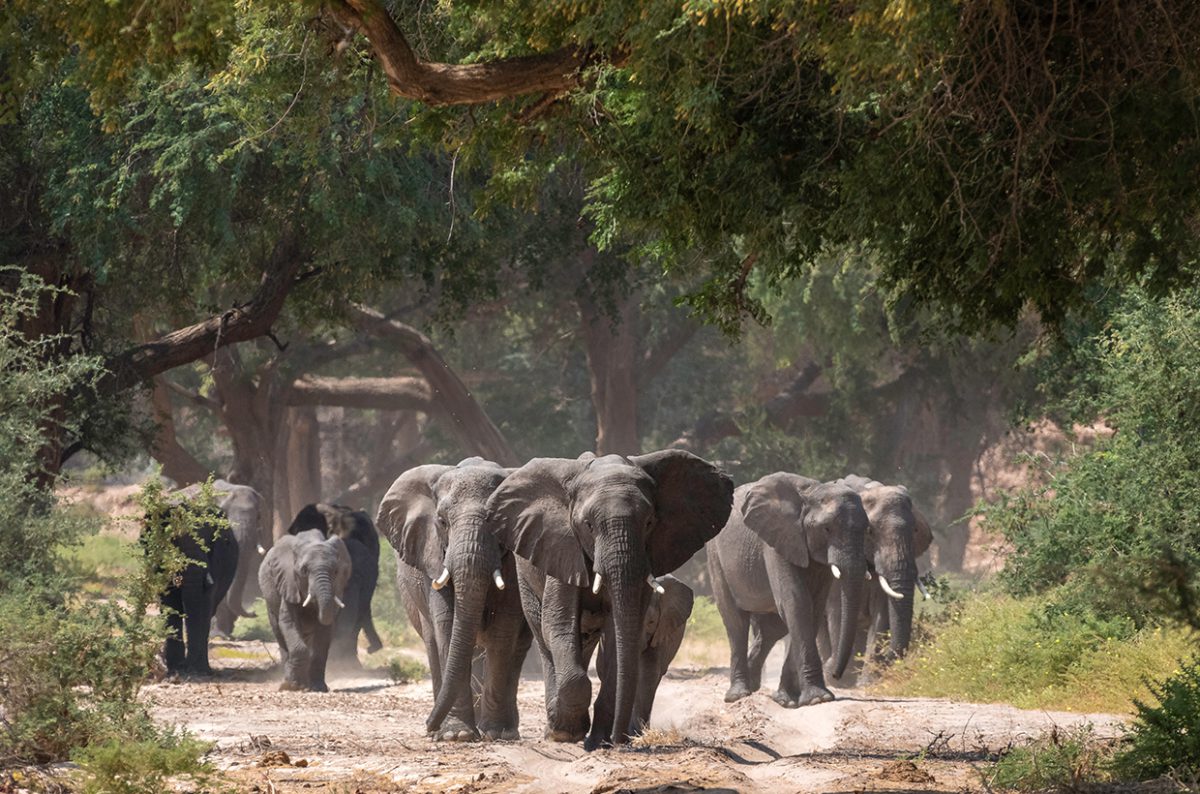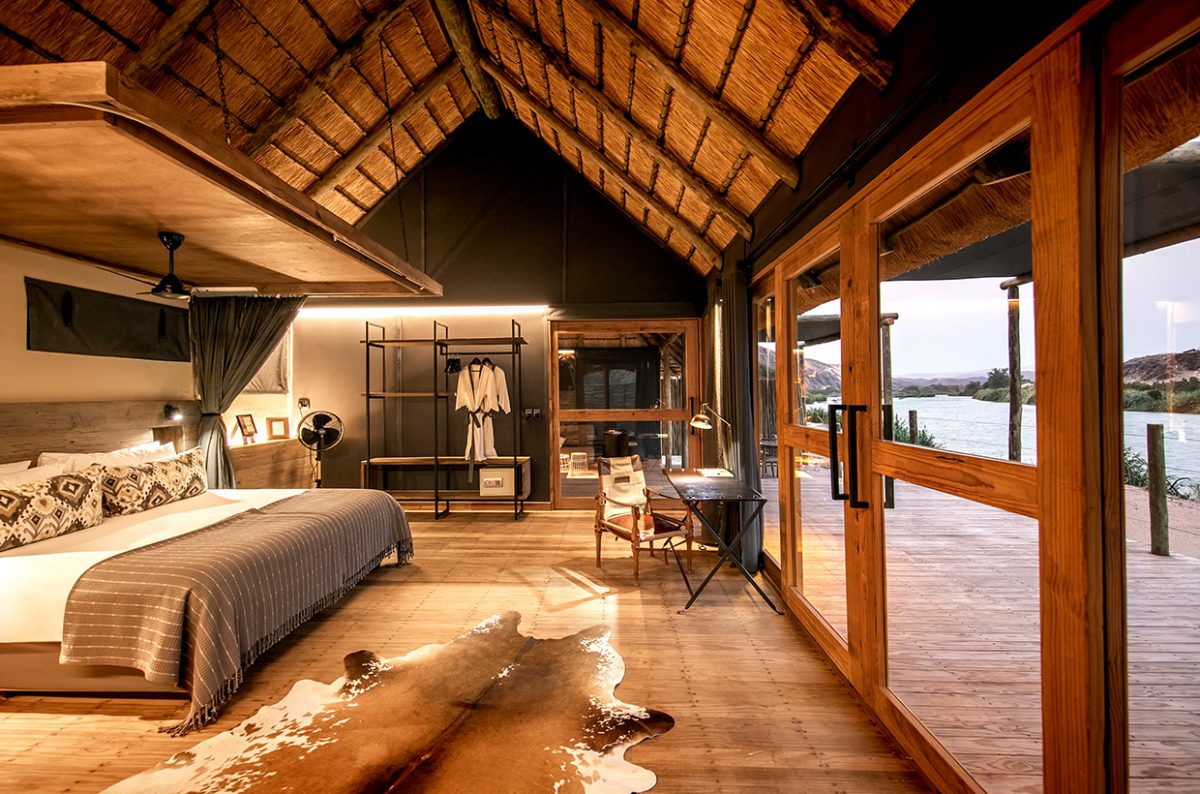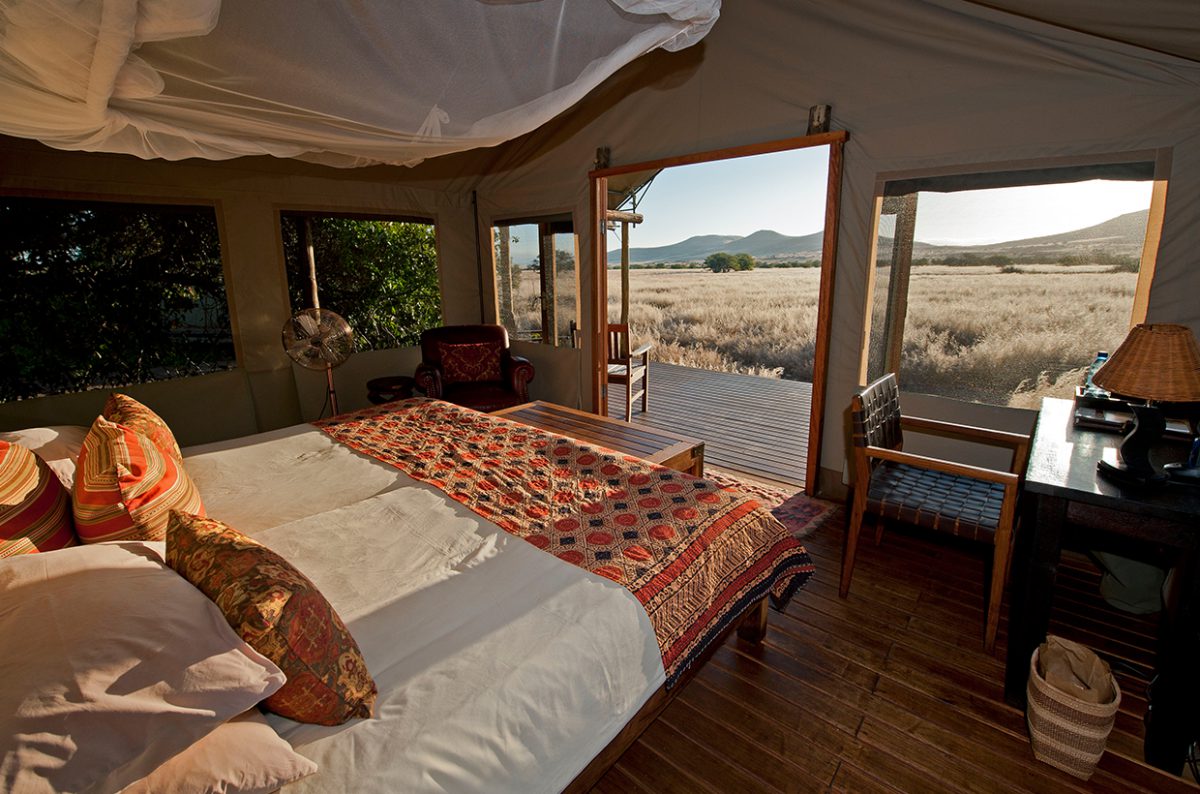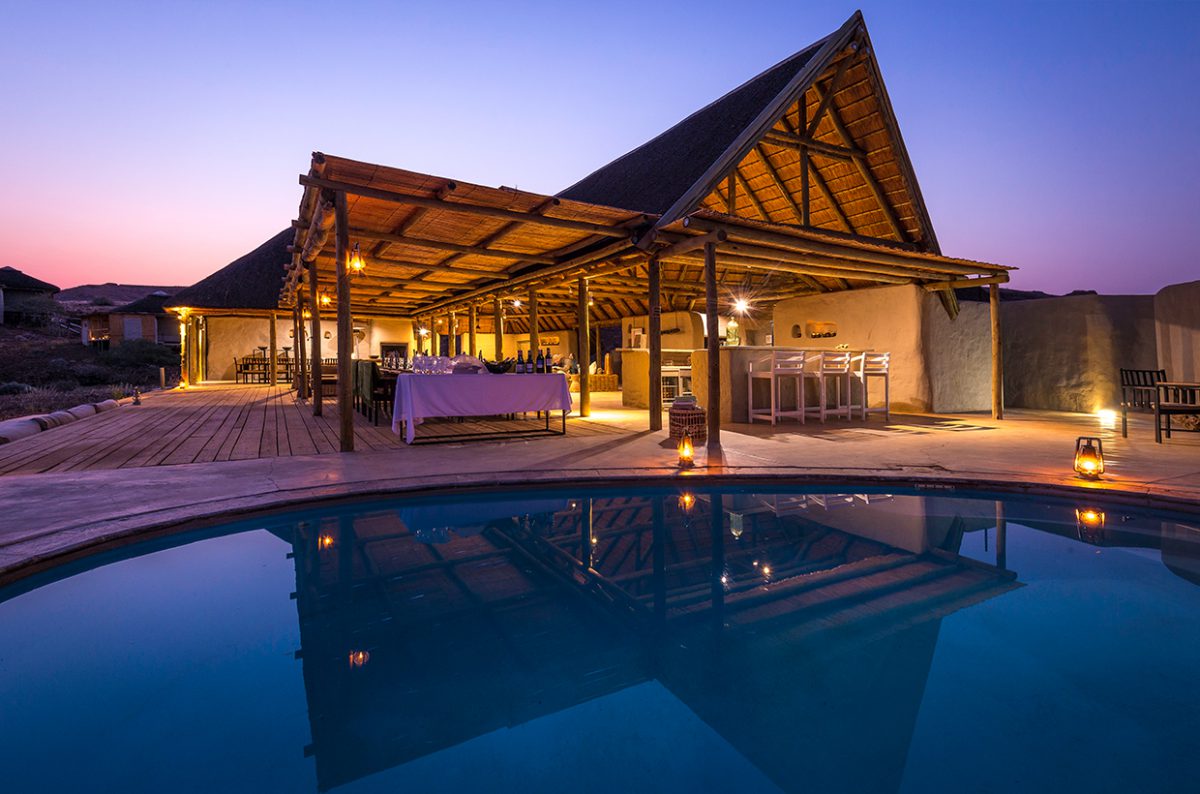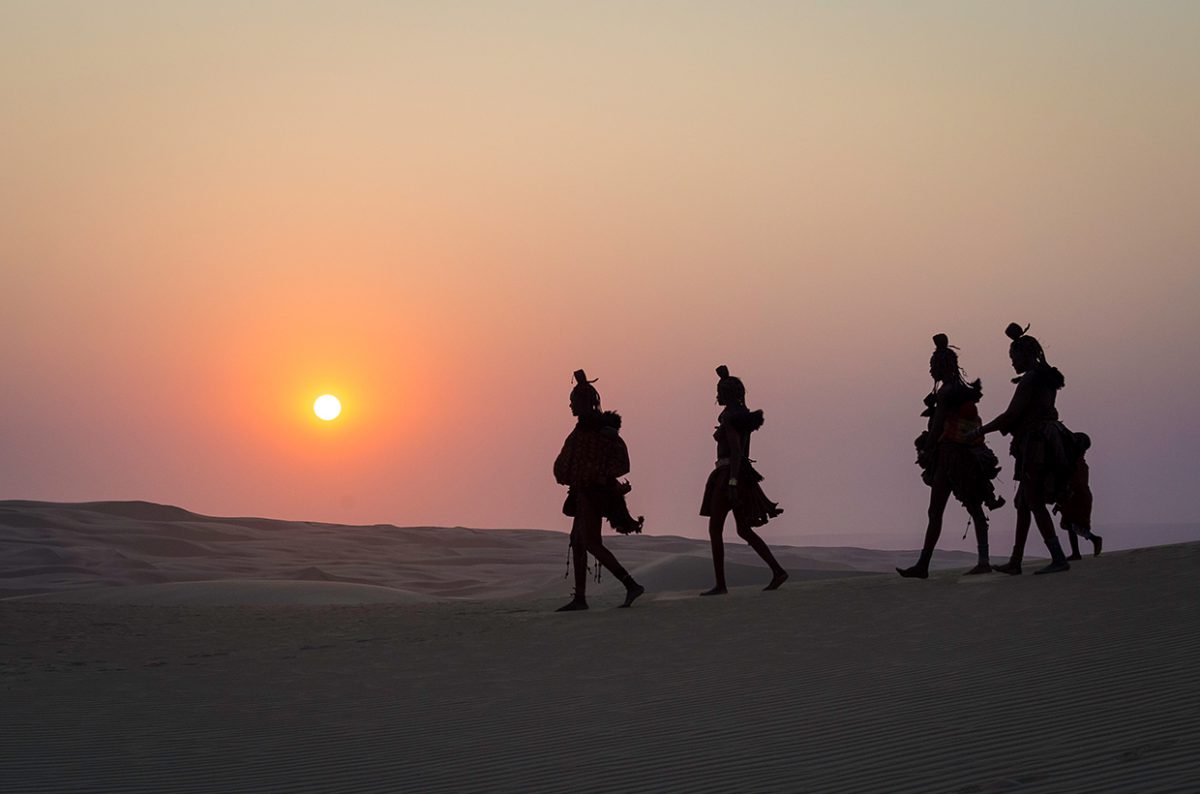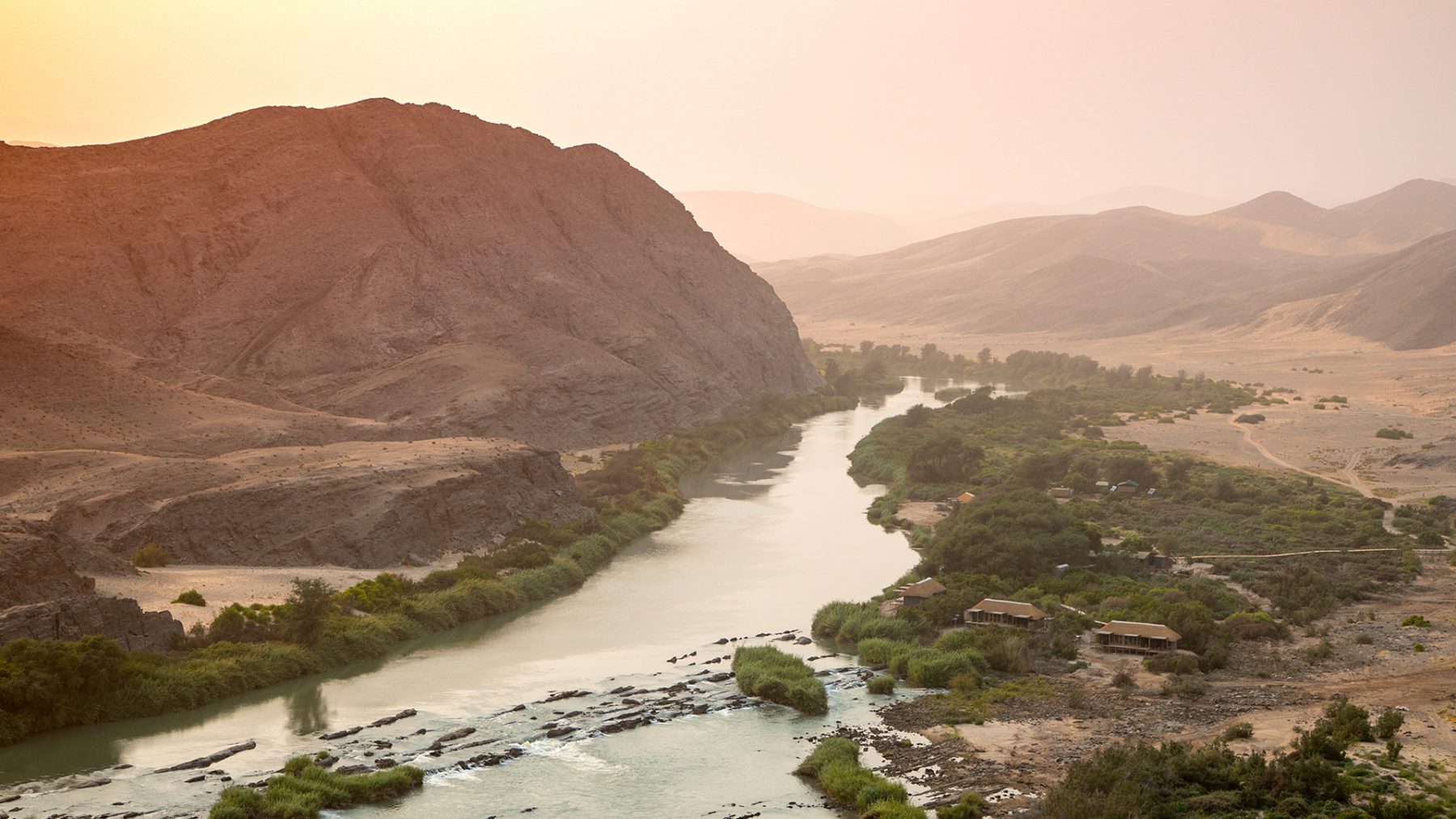Namibia, My Love by Michaela Cordes | 6th March, 2020 | Personalities
Nothing but dunes and red earth for hundreds of kilometers: The Namib is said to be the world’s oldest desert and is as inhospitable as a lunar landscape. And yet, this spectacular environment allows visitors to observe exotic animals that have adapted to the extreme conditions. We took a trip to three remote safari camps that was truly unforgettable.
I had never been to Africa before, this was my first trip. But instead of getting to know the continent via Cape Town like so many of my friends, I head straight to one of its wildest corners: Namibia. The country is more than twice the size of Germany, but only has a little over 2.5 million inhabitants. After Mongolia, the nation in southwestern Africa is the world’s second most sparsely populated. It has just 3.2 inhabitants per square kilometer compared with roughly 230 in Germany, for instance. I feel quite excited about my exotic trip as I board an Ethiopian Airlines jet that takes me first to Istanbul and then on to Namibia’s capital Windhoek. Following the 15-hour flight, our group of three continues on in a tiny plane, a 40-year-old Cessna.
Ruby Wilson, our pilot, is only 25, but has been working for the Wilderness Safaris group for seven years already. As far back as 1983, Wilderness Safaris was the first travel company to espouse the goal of creating sustainable eco-tourism. Founded by guides Colin Bell and Chris McIntyre in Botswana 37 years ago, today the company is listed on the stock exchange, employs roughly 3,000 staff and has expanded its operations to Kenya, Namibia, South Africa, Rwanda, Zambia and Zimbabwe. Once our lightweight, easily squashable luggage has been stowed on the small plane and we have managed to squeeze ourselves into the narrow seats, Ruby takes off. Behind us, the settlements quickly shrink until, in the end, you can only make out the vast desert landscape and seemingly dried-out riverbeds that pervade the arid countryside like blood vessels. Here and there, however, you can spot some sparse vegetation on their ridges.
As we learn later, these are precisely the places you are most likely to be able to observe wildlife, as the riverbeds alone offer animals a chance to find water and plants, making their survival in the desert possible in the first place.
The somewhat bumpy three-hour flight first takes us to the Desert Rhino Camp, a joint venture between Wilderness Safaris and the Save the Rhino Trust. This part of Namibia is home to Africa’s biggest population of black rhinos living in the wild. True to its motto “Purpose is the new luxury,” Wilderness Safaris uses the Desert Rhino Camp to promote its goal of contributing to the ongoing protection of this species. The sad fact is that today, all five surviving species of rhino are endangered due to poaching.
Africa is currently experiencing a spike in illicit hunting: On average, a rhino is shot illegally every eight hours, after which their horns are brutally hacked off and sold on the black market in Asia. (Incidentally, there is still absolutely no scientific proof for any medicinal effect of pulverized rhino horn.)
In order to put a stop to the senseless killing, the 36 gamekeepers who work at Desert Rhino Camp look after the remaining black rhinos. In 2014, the Namibian government passed a law requiring the animals’ horns to be filed down under sedation and for each rhino to be added to a register. The law was introduced because by 1995, the number of black rhinos had actually fallen to only 2,410 across the African continent. Happily, the measures seem to have worked and today, the number of this rare species has rebounded to 5,000.
A friendly welcoming committee meets us and shows us to our simple yet wonderfully cozy tented accommodation. Right away, our attention is drawn to a few vitally important rules: “Never stray from the existing path leading to the camp’s main tent,” and “Make sure you always zip up the tents properly” as well as “In an emergency, use the klaxon.” We are also asked to collect the waste water from our showers in a bucket that has been made available for that purpose, and to use only the eco-friendly soap and shampoo provided in order to avoid polluting the environment with sulphates unnecessarily.
In the evening, we gather for dinner around the camp fire underneath a spectacular, starry sky together with some of the gamekeepers. We listen to their tales of exciting adventure and traditional songs. The next morning – even before the rising sun has started to turn the sky a dramatic, fiery red – our local guide Bonse takes us around the area in his open-top Jeep. He explains that you are most likely to encounter wildlife in the early mornings or just before sunset because those are the only times the air is cool enough for them to come out. The animals like to escape the midday heat in shaded hideaways. Apart from the rare rhinos, the Hartmann Mountains are home to zebras, giraffes, oryx antelopes, springboks and spotted hyenas. All of these animals have adapted to life in the desert.
“Muscles relax, the mind expands. The vastness enters into the skin like a shot. ‘Our’ time dissolves.” ARIANNA DAGNINO, THE AFRIKANER
And sure enough, after stepping away from camp just a few meters, we come across a roughly 14-yearold giraffe bull unabashedly feeding on the leaves of a tree. Bonse points out Namibia’s national plant growing by the side of the trail. The Welwitschia mirabilis has evolved to store the scarce, precious water in an optimal fashion. It can reach an age of up to 1,500 years unless it is dug up and sucked dry by a giraffe or elephant desperate for water, of course. In the afternoon, we receive a message by walkie-talkie: Two rhinos have been spotted. We are asked to switch off the GPS location on our phones. Although there is no network coverage here and we are pretty much cut off from the rest of the world, if we take pictures with our phones and put them online once we return, the GPS data could be used by poachers to track down the protected animals. We leave the Jeep behind and continue on foot. With the aid of binoculars, we are able to observe a roughly 20-year-old rhino cow and her adolescent, four- to six-year-old male calf.
Black rhinos can reach an age of more than 40 years and weigh up to 1,400 kilograms. While their eyesight is poor, they possess a great sense of smell and excellent hearing. Among themselves, they communicate primarily through chemical signals in their dung, and arrange their middens in a circular fashion in stamped down grass. Later on, while we enjoy a drink and a spectacular sunset above the red, rocky earth, which is reminiscent of a martian landscape, Bonse tells us that Mad Max: Fury Road, the fourth film in the franchise, was shot here.
